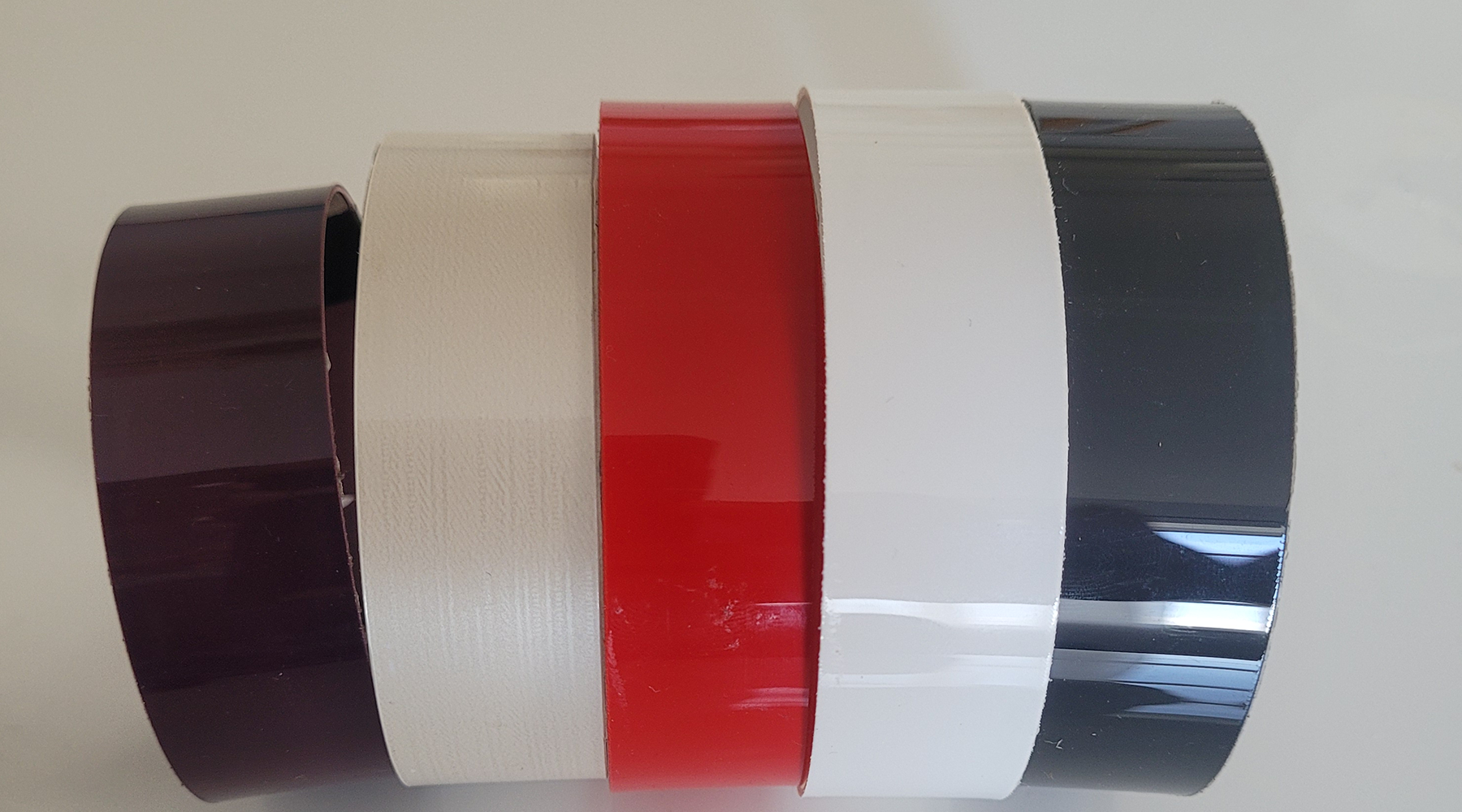Understanding the Differences: ABS vs PVC Edge Banding:
When it comes to edge banding, the choice of material is crucial. Among the many options available, two stand out: ABS (Acrylonitrile Butadiene Styrene) and PVC (Polyvinyl Chloride). Each has its own set of benefits and drawbacks that make it suitable for different applications. We'll look into the differences between these two popular materials, focusing on their properties, installation processes, and environmental impact.
Understanding the Basics: ABS and PVC:
ABS and PVC are the most commonly used materials for edge banding, providing a durable surface to protect board edges. ABS is a plastic polymer that is more expensive than PVC but is easier to work with and more environmentally friendly. It's fully recyclable and biodegradable and shrinks at a high temperature of 99 degrees. PVC, on the other hand, is cheaper but shrinks at 70 degrees, which can cause problems. It is less environmentally friendly and less fire-resistant than ABS.
The Environmental Impact
When it comes to environmental considerations, ABS holds a slight edge. While both PVC and ABS can be recycled, ABS is considered 'greener' because it takes a shorter period to decompose in the ground and doesn't expose harmful gases when recycled by burning. PVC, while also recyclable, takes longer to decompose and can release harmful gases when burned.
Fire Resistance
Both materials have fire resistance properties, but there are key differences. PVC is resistant to fire, but in the case of fire, exposure to harmful gases is risky and unhealthy. ABS, on the other hand, is more fire-resistant. Even if there is a fire, exposure to toxic gases is limited
Durability
Durability is another critical factor when choosing between ABS and PVC. PVC is more resistant to solvents and UV lights, making it possible to use the strongest form of solvent without causing damage. ABS, while less resistant to light and strong solvents.
It is manufactured with the highest quality pigments to prevent discoloration and fading.
The Cost Factor
From a cost perspective, PVC has an advantage as it's cheaper than ABS and other plastic materials. ABS is the most expensive edge banding solution in the plastic segment. However, the added cost comes with benefits, such as being easier to work with and offering a more environmentally friendly solution
Processing and Installation
When it comes to processing and installation of these materials, ABS is frequently preferred. It is more convenient to process on edge banders, and the edge banding trimming knives have a longer lifespan. PVC is more difficult to process in edge banders than ABS due to its robust composition. It can, however, withstand even the most potent solvents, making cleanup easier after application.
Another notable distinction in the installation procedure is the usage of laser technology. ABS is ideal for laser technology due to its fire resistance and lack of toxic fumes when burned. PVC, on the other hand, cannot be used for laser or Air-tech technology because of the poisonous gas it emits when burned.
Color Strength and Size Versatility
Both PVC and ABS offer a high level of color strength, with the same technology of printing used for both materials. However, most manufacturers can produce PVC in a wider range of width and thickness than ABS, offering more size versatility. This could make PVC the only
material suitable for your project if you require a specific size that ABS cannot provide
The Final Verdict
So, which one is better: ABS or PVC? The answer isn't straightforward. It depends on your specific needs and constraints. If you prefer laser applications, ABS is your only option. If you're looking for a more cost-effective solution or need a specific size, PVC might be the best choice. Remember to consider all the factors - environmental impact, fire resistance, durability, cost, processing, and installation process - before making your decision.
In conclusion, the choice between ABS and PVC edge banding involves careful consideration of a variety of factors. Both materials have their strengths and weaknesses, and the best choice will depend on the specific needs and circumstances of your project. Whether you opt for the more expensive, environmentally friendly, and fire-resistant ABS, or the cheaper, more durable, and solvent-resistant PVC, you'll be choosing a material that offers a durable surface to protect your board edges.
Recent Posts
-

The Importance of Boards in Various Sectors
Read more



